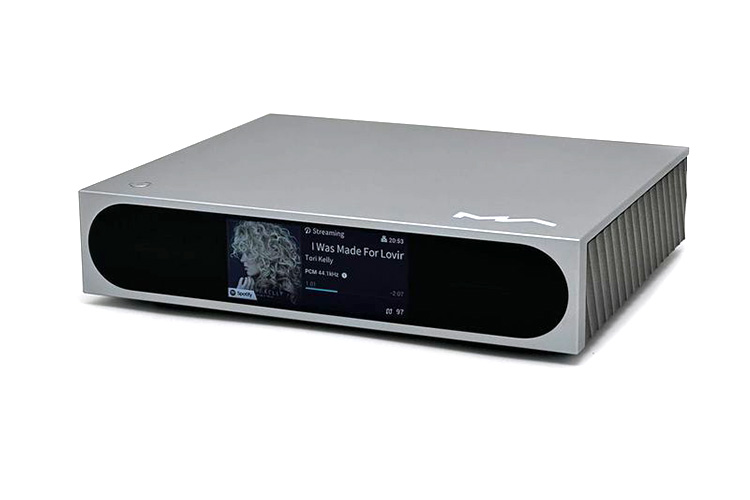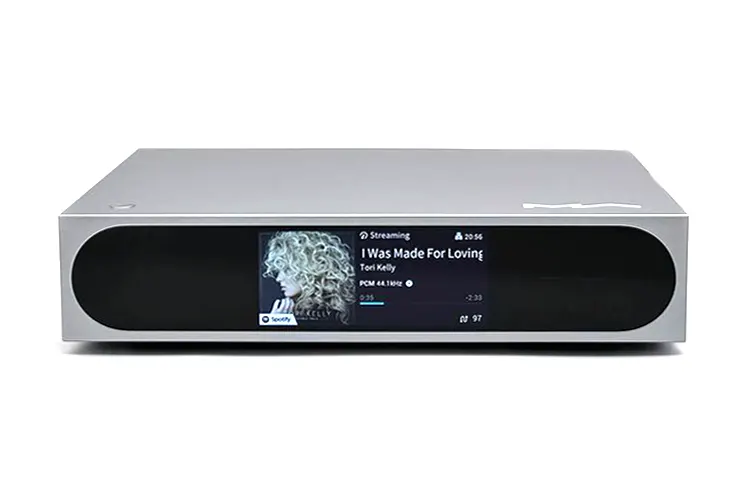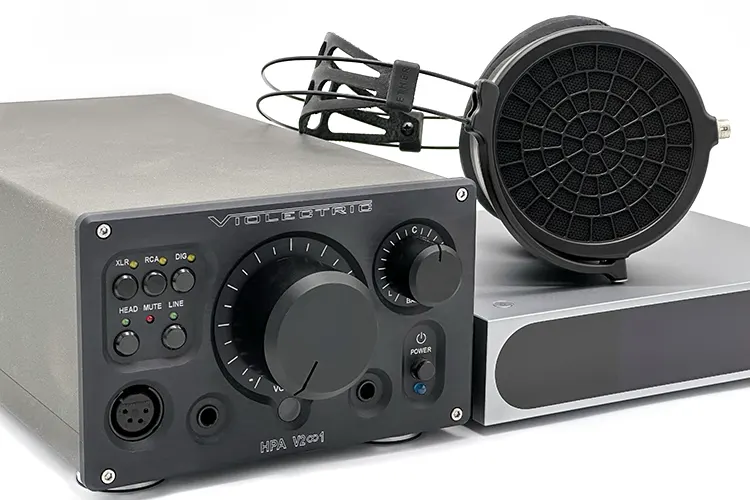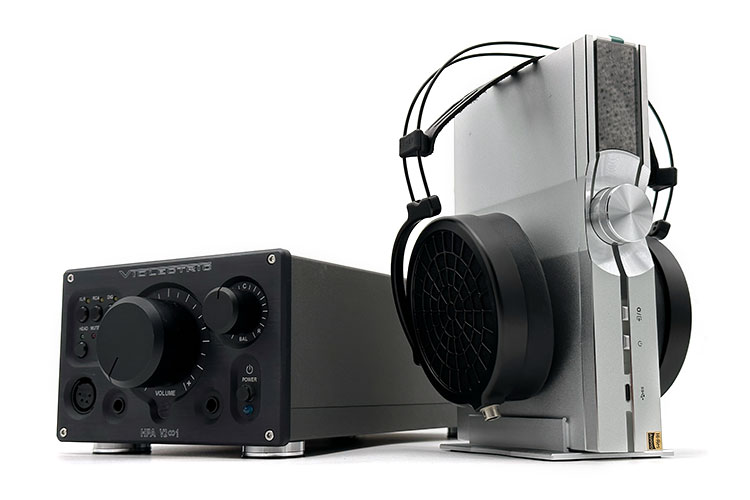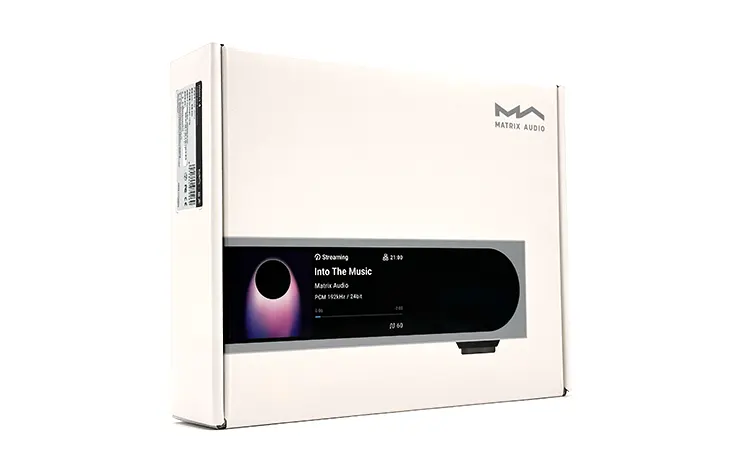Sound Impressions
Streamer
The mini-i 4 doesn’t deviate from the supple and tempting appeal of the mini-i Pro 3’s tuning, imbuing instruments with a meaty timbre. You get a lift in sub-bass presence, but it’s a diffused delivery slowing down the pace of those ample-bodied notes.
The persuasiveness and potency of the punch are more on the conservative side though it won’t choke the clarity of neighboring instruments thanks to its reasonably spaced-out stage.
Even considering the width added to defined sections of a bassline, the mini-i 4 can pull out the necessary details in a refined manner.
Serene guitar passages deliver a nice combination of organic overtone with a lean coat of softness to its twang. At the same time, those plucks still show nimbleness elevating the precision and clarity of the resulting reverb.
It’s really hard to tell that there is a SABRE chip inside since the tonality of the mini-i 4 encouraged me to listen to bristly-voiced singers for a couple of songs straight without fatigue.
Nevertheless, the technical performance translates to tangible meticulousness in producing dynamic scenes like riffs and shouts. This avoids situations where the treble region could be more than what is comfortable.
DAC
The mini-i 4 DAC delivered a slightly different quality to the streamer. Whilst there is some similarity to the low-end set by the streamer it did not sound as heavy anymore.
This leaner bass offered a more reserved but punchier character though the bite on a rolling bassline, for example, somehow became shallower.
I like the more charming nature of the streamer for vocals and guitars. The frisky texture of the DAC with reverb and airier sections lacks a bit of character for my personal preferences. With a weaker presence as well, pianos come across as drier and less engaging.
That theme continued with energetic horn passages. The streaming mode continues to prove its value showing a more elegant and realistic composition. The magnitude of the instrumental body doesn’t feel as limited here when compared to the DAC only.
Synergy
Pairings
The Burson Conductor 3 Reference and Audio-Technica ATH-ADX5000 pairing with the mini-i 4 convinced me of the positive traits the streamer has.
It is still lacking a bit of definition to fully utilize the drivers of the headphones plugged but it positively regulates the expected spirited timbre to one that is more acceptable for longer periods of listening.
Moving over to a different setup, the mini-i 4 got tweaked to sound darker and smoother when it was paired with the Violectric V281 and the Dan Clark Audio Ether 2.
Electric guitars are pushed back hovering in a space that’s not as open as the first pairing. Horns aren’t as immense but dynamic sections are handled just as well as the ATH-ADX5000.
With a thicker midrange, the Ether 2 is a syrupy pairing that works beyond the still quite natural impression coming from the Conductor and ATH-ADX5000 combo. The upper midrange has a cooler shout though it lost some of the thrill.
Select Comparisons
EarMen Staccato
Technical
Both devices are similarly capable of only connecting to the internet through an Ethernet wire. The tall antenna peeking behind the Staccato is a nimble Bluetooth 4.2 receiver and not for WiFi streaming.
With a USB reader to consider as well, the Staccato may not be ROON-ready but it continues to match the mini-i 4 in compatibility with other online streaming platforms and with local playback.
The mini-i 4 is not a standalone streamer like the Staccato. With a fully working DAC section inside the same enclosure, the mini-i 4 extends its list of digital inputs.
What it doesn’t have is the coaxial and optical outputs of the Staccato, so users are pretty much stuck to the analog conversion of the ES9039Q2M DAC chip.
Design
Part of a stackable setup, the unity chassis of the Staccato follows the same unassertive formula of the Tradutto and CH-Amp for coherence. Its blockish frame is a lot cuter than the mini-i 4 and with a lot fewer features as well.
The mini-i 4 will look more confident in a modern home especially when its 3.46-inch LCD is lit up. While checking out the Staccato, there is only a basic indicator that blinks and changes color to signify its current state.
Performance
With a flatter bass profile, the Staccato still balances desirability with reliability. The lower end of the frequency is prominent enough to show off its better definition and finesse. Bass guitars on the Staccato however exhibit a slightly shallower bite than the mini-i 4.
It may be a bit stiffer than the mini-i 4, but guitars on the Staccato show better clarity for a precise and remarkably roomier resonance.
Not aiming for honesty like the Staccato, the more laid-back mini-i 4 sometimes struggles with the subtler parts of vocals. In keeping the basic information intact, the mini-i 4 isn’t worried as much by providing a point of difference in character.
Horns sounded better on the Staccato since it is airier and not as hurried as the mini-i 4. It also handled a busy rock song with more resolve without glossing over some details lost on the mini-i 4.
iFi Audio NEO Stream
Technical
A do-it-all streaming box from iFi Audio, the NEO Stream is kitted from top to bottom. With a noticeably lengthier spec sheet to understand, iFi Audio has introduced a few neat tricks not available in the mini-i 4.
While also lacking Bluetooth compatibility, the NEO Stream has dual-band WiFi and a more extensive set of Ethernet inputs. With three LAN types to be exact, iFi Audio is revolutionizing cabled streaming even going as far as creating a separate router signal repeater called the OptiBox.
The NEO Stream also includes the ‘exclusive modes’ first seen on the ZEN Stream. This system tweaks the software to work exclusively with the currently selected streaming mode streamlining the tasks at hand.
Design
The NEO Stream exudes the same contemporary quality as the mini-i 4 but with a slightly different vibe. A little busier, the NEO Stream’s design is a bit more utilitarian modernized by the gracious curvatures and glossy beveling.
The retina-grade TFT display on the NEO Stream is smaller. But, aside from looking sharp, it has the added benefit of being noiseless to the rest of the components.
There are more physical controls on the NEO Stream. With no touch-sensitive sensors and panels to speak off, it includes a crisp turning volume wheel and firm buttons in front. Both devices however have a companion app so needing to use the controls on the actual unit should not be too often.
Performance
Peppy like the mini-i 4, the NEO Stream shows a greater ability to isolate drums and synths achieving a cleaner separation with vocals and neighboring instruments. This allows the NEO Stream to fill in a room more delicately since it layers notes in a slightly more accurate manner.
Both devices have an organic flavor enriching a guitar pluck just enough for it to not sound dull and dry. Between the two, the NEO Stream is staging the image farther while making sure the placement is just as accurate and easy to detect.
The gap of loudness between different mixes is more distinct on the NEO Stream. Having a higher dynamic impression, demanding songs with instruments like saxophone and electric guitars are given more care to not appear distracting.
Our Verdict
Progressing from an already established legacy of great streamers, the Matrix Audio mini-i 4 now carries a much wider range of source repositories expected from a modern streamer.
Hitting a lot of key network streaming needs, it won’t be a chokepoint in setting up a good home audio system offering both a pleasing technical performance and a beautiful design.
For the more demanding customers who want a dual-band WiFi and headphone amplifier, there’s the more expensive mini-i Pro 4. The only real negative is the lack of Bluetooth, a nifty feature available in the previous version.
With all the enhancements in streaming baked into the mini-i 4, I recommend taking advantage of the companion MA Remote app. It does a really nice job of showcasing the charming character and likable tuning of the mini-i 4.
Matrix Audio Mini-i 4 Specifications
- DAC: ES9039Q2M
- Digital Input: Coaxial, Optical, HDMI ARC, USB Audio (Type B)
- Local Playback: USB (Type C)
- Aux Input: RCA (2.1VRMS Maximum)
- Line Output: XLR (4.4VRMS), RCA (2.2 VRMS)
- Network: LAN (10/100/1000 Mbps)
- MA Player: MA Remote App
- Power Voltage: AC 100V-240V 50/60Hz
- Weight: 1.3kg (2.87 pounds)
- Size: 224mm x 186mm x 53mm (WxDxH)

